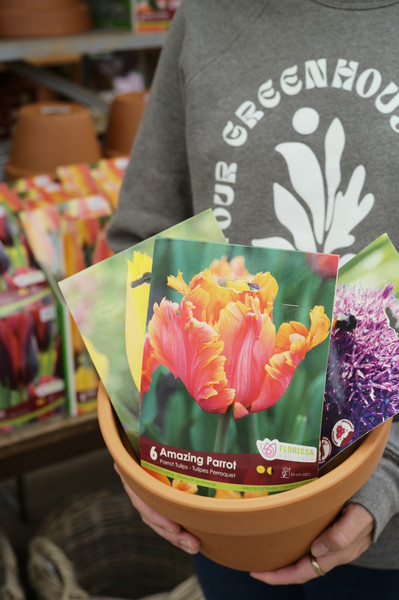Planting Spring Flowering Bulbs in the Fall
Posted by Jessie Jacobson on Sep 8th 2024
Planting Spring Flowering Bulbs in the Fall
It’s Fall, but it’s time to think spring. Yep! Now is the time to start planning next year’s garden, and that includes planting spring flowering bulbs.
One thing is for certain, it’s thrilling to see those first green shoots push out of the ground in spring - a delightful pop of color after all you see is white. Something that may be a little less clear, however, is exactly what is a bulb and why do we plant them in the fall?
What is a bulb?
A bulb is actually a modified stem, an underground storage unit with all the elements required to grow into a plant including leaves, flowers, stem, and sometimes even flower buds. The whole life cycle of the plant, along with energy and nutrients, is stored within this underground structure during the resting stage. Bulbs are living things. They should be treated with care, planted at the appropriate time, and not be allowed to dry out.
Bulbs are classified as either major or minor, and the difference is pretty much just based on size. Also, minor bulbs tend to be hardier and more likely to naturalize and spread.
Major bulbs include tulips, daffodils, and hyacinths. Tulips and hyacinth will only last a year or two and will need to be replaced. Daffodils are hardy and do multiply and naturalize.
Minor bulbs include gallanthus, crocus, and muscari. These bulbs are smaller in size and produce smaller flowers. They are extremely hardy, will naturalize, and look best planted in mass.
Learn how to plant bulbs
Plant bulbs where they will get full sun in early spring. It's okay to plant in what's normally a shady area, such as under deciduous trees. As trees leaf out in the spring, flowers fade. Get your bulbs in the ground by the end of September (or early October) for best results as bulbs nees ample time to put down roots.
Bulbs prefer rich, well-drained soil. Work in Purple Cow Activated Compost to amend your soil for best results. Make sure to pick up either Bulb Tone or Bone Meal to supplement your soil’s nutrition. Both products include phosphorous which is essential for root development in the fall and big, beautiful blooms in the spring.
Bulb blooms look best in naturally scattered clumps or mass plantings. Plant bulbs in groups throughout a perennial bed. Feel free to mix different colors and varieties together. Plant smaller bulbs over larger ones, in the same hole, for a heavier blooming effect. Be creative and have fun!
Use a trowel or bulb planter to dig 2-3 times as deep as the bulb is tall. Or dig a wide hole to hold several bulbs.
Drop the bulb. Teardrop-shaped bulbs should be planted tip-side up, flat bulbs should be planted flat side up. Look for roots, if there are any, plant them facing down. If it’s hard to tell which way is up, plant the bulb sideways, the plant will figure it out and get growing in the right direction.
Cover and protect. Rodents love bulbs. Cover the planting area with chicken wire secured by sod staples to deter these little diggers. As an added deterrent, spray bulbs with a repellent, let dry, then plant. You can also sprinkle Liquid Fence Granules over a newly planted area.
Hot tip: Make sure to apply repellants such as Liquid Fence or Repels All as bulbs emerge in the spring. Our furry friends love bulb foliage and flowers just as much as we do!
Water them in and you are set to go! Now its time to sit back, relax and enjoy the show – next spring that is!

